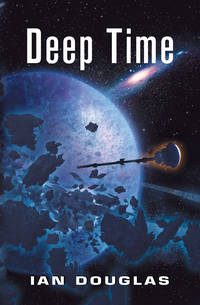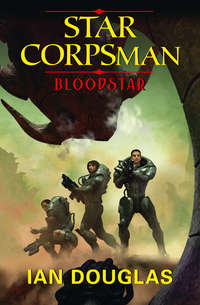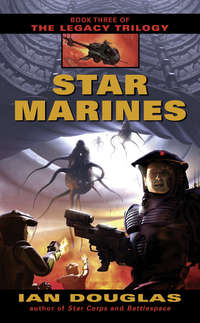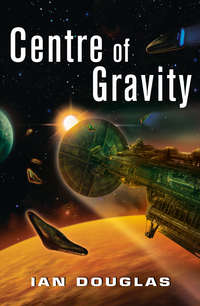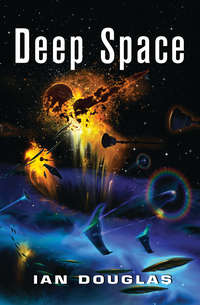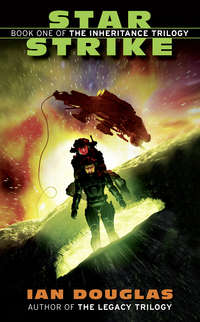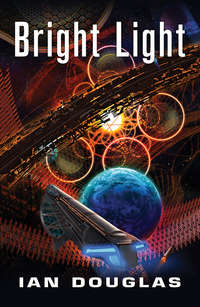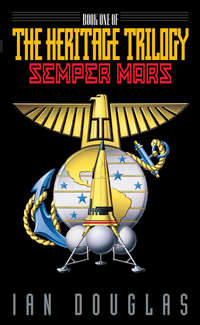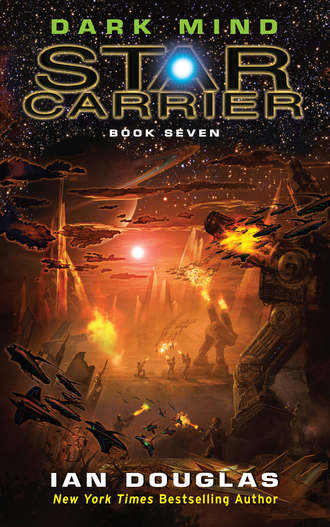
Полная версия
Dark Mind
“The Stargods …” It was an old idea, one suggesting a source for unexplained technological artifacts like the TRGAs scattered across the galaxy … or the Black Rosette at the heart of Omega Centauri. Laurie Taggart had been a passionate devotee of that idea, a member of the Ancient Alien Creationist Church.
But it was also an idea that explained nothing.
“What people enamored of the Stargods tend to forget,” Konstantin said, “is that such beings very likely have absolutely nothing in common with us. Would you stop to communicate with an anthill?”
“I don’t know,” Koenig replied with a virtual shrug. “It depends on whether I could understand what the little buggers were saying. And there are entomologists who would be interested in finding a common language, if there was one.”
“It is possible to push such metaphors too far, Mr. President. The point is that the Tabby’s Star aliens may have nothing whatsoever in common with humans, and no wish to communicate with them … or to help them against the Sh’daar.”
“I could also imagine them having reached their own technological singularity,” Koenig said. “They might have built the thing, whatever it is … and then left. They’re not around any longer.”
“True. Still, the fact that the Agletsch have suggested that a human ship explore Tabby’s Star outweighs, somewhat, the low probability of finding useful allies there.”
“Well, if anyone in the galaxy knows about such allies, it would be them. I just wish we knew a bit more about the Aggie agenda. What the hell do they get out of all of this?”
“You will need to treat this … gift of information with caution,” Konstantin said. “The Agletsch are Sh’daar agents, members of the Sh’daar Collective. We must assume the Agletsch have an agenda of their own, a reason to share this information freely. It is unlikely that they would actively help us against the Collective.”
“Maybe they’re tired of sticking to the Collective’s party line. Maybe they’re trying to rebel.”
The idea had been explored before. In the past, some Agletsch had seemed to be working outside of any Sh’daar influence. Others definitely worked within. There’d been … hints that they would prefer that their entire civilization be free of Sh’daar influence. And, indeed, the information they had traded to humans in the past concerning various Sh’daar client races had again and again proven to be priceless.
But what was their angle this time?
And can we risk ignoring their advice while we try to figure that out?
“I would like to send our best out there,” Koenig told the AI, coming to a decision.
“The star carrier America,” Konstantin replied. “Admiral Gray.”
“You know, Konstantin, we do have other star carriers. Not enough, maybe … but we have others.”
“Most currently undergoing repairs.”
“There are the Declaration and the Lexington.”
“Both untried as yet. And the Declaration is still undergoing space trials. I recommend using America when she returns from the N’gai Cluster.”
“We were going to deploy America out to the Black Rosette. Operation Omega.”
“But to explore what might well be an entire Dyson sphere,” Konstantin pointed out, “it would be best to have several fighter wings available. Star carriers offer certain specific tactical advantages not possible with cruisers or even light carriers.”
“Point,” Koenig conceded, reluctantly. “But we’ve taken some heavy casualties. We may not have the luxury of using our first choice.”
TC/USNA CVS America
Flag Bridge/CIC
N’gai Cluster
1640 hours, TFT
Admiral Gray floated in the CIC, gazing into a tangled jungle of suns ahead, against which even the biggest Sh’daar warships appeared to be toys. He remembered this vista from his last deployment here, back when he’d been a fighter driver under the command of Admiral Koenig.
Now he was admiral … but the view was the same.
Local space was crowded with suns, including hundreds more brilliant than Venus at its brightest in the skies of Earth. Six stars, in particular, outshone all others—a perfect hexagram of dazzlingly brilliant blue suns gleaming almost directly ahead. The Six Suns were the hub of the N’gai Cluster, a kind of central, focal monument for the Cluster’s star-faring civilization. Each giant star was forty times the mass of distant Sol, orbiting with the others around a central gravitational balance point in a perfect Klemperer rosette. Obviously they’d been engineered that way, probably nudged in from elsewhere in the galaxy and dropped into position. Quite possible those blue-white giant suns themselves were artificial, engineered by some highly advanced science. The stellar arrangement suggested an astonishing degree of technological prowess and skill, one millions of years in advance of current human capabilities.
Eight hundred and some million years in the future, in the time Gray thought of as the present, those suns had long since gone supernova, reducing themselves to black holes—the enigmatic Black Rosette at the center of Omega Centauri. The N’gai Cluster—a dwarf galaxy—had been devoured by the gravitational hunger of the much larger Milky Way. The Omega Centauri star cluster itself was now known to be the remnant nucleus of this, the N’gai Cluster, 872 million years later.
Gray stared into the brilliance of the Six Suns, and wondered …
What were the Rosette Aliens?
All he knew was that they were enigmatic and highly advanced beings of unknown capabilities and unknown origin who’d appeared at the Black Rosette and begun building … something, a structure vast and utterly mysterious.
Were the Rosette Aliens somehow related to the Sh’daar?
Maybe we’re going to find out at last, Gray thought.
Numerous other artifacts also hung against that dazzling starscape, all indicating an advanced civilization far more technically proficient, far more ancient than anything merely human, such as the TRGA cylinders and artificial planets, not to mention strange structures, vast and incomprehensible. There were enormous tube-shaped habitats hundreds of kilometers across, rotating to provide artificial gravity and displaying terrain across their curving inner surfaces spread out like maps. Black holes ringed by artificial structures were obvious sources of high-tech energy, and starships the size of sprawling cities made their way across the crowded backdrop of the dwarf galaxy’s core.
A number of Sh’daar vessels, many considerably larger than America, by now had gathered around the human fleet, bending space briefly, and bringing the battlegroup across several light years to the dwarf galaxy’s heart. Now those ships were guiding America and the other vessels to their final destination, an entire world larger than Earth, covered over completely with black metal and the tangled, blazing knots of what could only be urban centers and vast industrial facilities. More of that planet’s surface appeared to be roofed over in artificial, light-drinking ebon materials than was open to the sky.
It was a single city the size of a planet.
The metallic world did not appear to have a sun, but was wandering among the densely packed stars of the cluster’s core, bathed in their light.
“The Adjugredudhran commander of the Sh’daar flagship reports that this is their capital world,” Konstantin-2 reported. “Daar N’gah.”
“Very well,” Gray replied. “Thank you. Do we have their permission to approach the consulate?”
There was a long pause. “Affirmative, Admiral. Deep Time currently is in an extended orbit, about half a million kilometers farther on. They request that we give Daar N’gah wide clearance due to local traffic.”
Which might, Gray reflected, be the full truth, or it might reflect Sh’daar concerns about more rebels appearing and the potential for collateral damage to the planet if another firefight began. Either way, it made sense to him from a tactical standpoint if he were in their position.
“Tell them we will comply.”
America, under her own power now, swung wide of the black metal world and decelerated into the indicated orbit. The consulate station unofficially known as Deep Time gleamed ahead in the harsh, reflected light from the Six Suns, a silvery, glittering torus rotating to provide those aboard with artificial gravity.
Deep Time had started out eight months earlier as a small USNA deep space military base constructed in the N’gai Cloud to keep an eye on the Sh’daar, a concession by the Collective possible only with the base’s near-total demilitarization. No lasers or particle cannon, no high-velocity KK weaponry, nothing that might upset the unknowable currents and eddies of time itself. The men and women stationed here were permitted sidearms, but the posting was strictly made on a volunteer basis. Hand lasers and man-portable pee-beeps were no match for five-kilometer flying mountains.
A couple of months earlier, while America had been deployed to the far future, the Deep Time station in the far past had been designated as a kind of semiofficial consulate, Humankind’s ambassadorial presence in the N’gai Cluster … though, again, no one knew what the Sh’daar themselves thought of the arrangement. The consulate staff, including almost a hundred xenosophontologists, had been studying the Sh’daar and their civilization, at least as it had existed in the remote past, the epoch known as Tee-sub-minus.
Humans now knew that the ancient Sh’daar had time-traveled to Earth’s galaxy in the twenty-sixth century, the epoch they called Tee-sub-prime, and made contact with the various star-faring civilizations that had been fighting their on-again, off-again war with Earth. On Earth, it begged the question were the Sh’daar of the twenty-sixth century under the control of the ancient N’gai civilization? No one knew for sure, and attempts to query the ancient Sh’daar had so far been frustrating and inconclusive.
With the civil war on Earth concluded at last, however, it was time to find out the truth … and also for the humans to warn the ancient Sh’daar about what they had learned even further into the remote future. The America battlegroup had been dispatched as an escort for the Glothr emissary—an opportunity to show the flag, and to back up the Glothr representatives with firepower if necessary.
Gray desperately hoped that firepower would not be necessary. The Sh’daar were so far in advance of Earth technology that it was difficult to even compare the two. Human tacticians still weren’t sure what it was that the Sh’daar had feared about America and her escorts twenty years ago … or why they’d given in so easily.
Or if they had truly given in at all, Gray thought.
“Range to Deep Time One now four thousand kilometers,” Mallory reported. “We’re slowing our approach.”
“We’re receiving telemetry from DT-1,” Pam Wilson, the communications officer added. “They report everything quiet and normal.”
“Very well.” So far, so good …
The attack as they’d emerged from the TRGA had shaken Gray more than he cared to admit.
Gray no longer needed image enhancement and magnification to see DT-1. It was visible in CIC’s forward view, just a kilometer away, now.
“Konstantin?” Gray asked. “Are you ready?”
“Of course, Admiral. You may release me at your discretion.”
“Captain Gutierrez,” Gray said. “If you will …”
“Aye, aye, Admiral. Releasing the baby in three … two … one … launch.”
The Tsiolkovsky Orbital Computer Assembly—TOCA, for short—was a ten-meter cylindrical habitat that had made the voyage out from Earth strapped to America’s spine aft of the landing bays. It carried the computer hardware that was housing the sub-clone downloaded from the original Konstantin AI.
Gray wasn’t certain the Sh’daar understood the concept of “ambassador,” but they’d given permission for the TOCA cylinder to be brought to N’gai, and for it—and Konstantin-2—to be linked to the Deep Time facility. The fact that the AI had already been in touch with the Adjugredudhran commander said they at least accepted Konstantin-2 as someone they could talk to.
Something, Gray thought, definitely had changed in Sh’daar attitudes. Twenty years earlier, they’d been terrified that a human battlegroup had penetrated both space and time to reach this cluster. The Sh’daar had been willing to do almost anything—like end a war—to make the humans leave. Speculation and scuttlebutt had played with the idea that they were afraid human activity here in the past would rewrite the future—a future in which they had a vested interest.
Now, however, they seemed to be welcoming contact.
Gray suspected that they feared something else more than they feared humans … even humans playing in their own temporal backyard.
The cylinder carrying Konstantin’s sub-clone passed America’s shield cap and dwindled toward the gleaming silver torus.
And Gray couldn’t help wondering if even a super-AI was going to have trouble figuring out just what made the Sh’daar tick.
Chapter Five
2 November 2425
Deep Time Orbital Facility-1
N’gai Cluster
1020 hours, TFT
Gray was seated in what appeared to be a large classroom or lecture hall. Concentric rings of comfortable benches overlooked a central well a dozen meters across. A dome overhead looked out into the heart of the N’gai Cluster, filled with stars, with artificial worlds, with the enigmatic gleam of the Six Suns. McKennon, the lead xenosophontologist of the Deep Time facility, was seated next to him … or seemed to be. In fact, Gray was back in his office on board America, while McKennon was in a communications chamber on board DT-1. AI software created the illusion—the virtual reality—of their conversation within their cerebral implants.
Other conference attendees—all human, so far—were scattered through the room, waiting for the start of what promised to be a very interesting meeting.
“Yes,” Gray said, “but we weren’t sure of that. All we knew was that if we were just a hair off course during the passage through the TRGA cylinder, it could screw both with where and when we emerged … possibly by quite a lot.” Gray chuckled. “You have no idea how terrified I was that we might emerge before Koenig arrived here … twenty years ago. That would have done a job on causality, let me tell you!”
“Twenty years out of eight hundred seventy-six million?” McKennon said, and nodded. “You would need a degree of precision good to within one part in forty-three point eight million. You’re right. That’s pretty tight! Fortunately, it looks like there’s some leeway built into the thing.”
“We suspected as much when we took our initial temporal navigation readings,” Gray told her. “But it’s good to hear it from someone who knows what she’s doing.”
“Who, me?” She laughed. “Just about everything we’ve done since we got here has been pure guesswork!”
Gray looked up at the apparent dome covering the virtual classroom. Beyond, high in the sky and made tiny by distance, those six brilliant, blue-white suns locked together in a hexagram served to mock mere human science, math, and technology. They represented an obviously artificial engineering on an interstellar scale, one that utterly dwarfed human ideas of what was possible … human ideas of scale and scope and sanity.
“I’d say your team has done a pretty good job so far,” Gray said slowly, “given that you’re working with ideas and capabilities that we can’t even begin to understand.”
She followed his gaze up, up and out into the distance to the tightly ordered gleam of the Six Suns. “Every time I see that … thing,” she admitted, “I wonder how it’s even possible that we’ve survived as long as we have. The Sh’daar could have wiped us out easily, at any point since our first encounter with them. Instead, we’ve fought their proxies piecemeal. It doesn’t make sense.”
“Did the Sh’daar build it?” Gray asked. “I thought there was some question about that.”
“Well, if it wasn’t them, it was the ur-Sh’daar. Before they transcended. Same thing, really. The Sh’daar are the ur-Sh’daar … leftovers?”
“Maybe,” Gray replied. “Or maybe there was a still earlier civilization.”
“Please, Admiral,” McKennon said, raising her hands in mock pain. “We don’t need to complicate things by imagining whole pantheons of mystic ancient Stargods!”
Gray laughed. “Of course not. But still … the universe started thirteen point eight billion years ago …”
“Thirteen point eight two,” she said, correcting him.
“Thirteen point eight two billion years,” he agreed. “Subtract four and a half billion years, which is how long it took to evolve a tool-using, spaceship-building species on Earth. That leaves well over nine billion years to play with. How many species can evolve; develop spaceflight, computers, and nanotechnology; and reach the point where they …” He stopped, looked up, gestured at the alien sky. “… where they can move stars around just to create a titanic objet d’art?”
“The Six Suns are probably a transportation system, like the TRGAs,” McKennon said. “Those rotating stellar masses twist spacetime, and open a gate to … I guess to somewhere else. Maybe somewhen else, too. We have no idea what it does. But I know what you’re saying. Whoever built the thing did it so … so casually. Like it was nothing for them to set six stars orbiting around a common center of gravity.”
“Uh-oh,” Gray said. “Looks like the Glothr just linked in.”
The image of one of the Glothr, presumably their equivalent of an ambassador, had just materialized off to the right side of the virtual classroom. Three meters tall and very roughly resembling a terrestrial jellyfish, the being stood on a writhing mass of tentacles, with a filmy mantle at the top, like a parasol. Much of the being was transparent or translucent; you could see the brain within a circle of twenty-four jet-black eyes. Its body, a column intermittently glimpsed behind the tentacle mass, was transparent, encasing its translucent internal organs.
Gray was glad that the writhing tangle of tentacles usually hid the being’s interior from view. Those tentacles—the thicker ones used for locomotion, the thinner ones for manipulation—tended to be translucent near their bases, but shaded into opaque grays and browns. The translucent parts shimmered with rainbow colors, like a shifting, oily sheen, and clusters of blue and green lights gleamed and winked within the glassy depths of the body. The Glothr, Gray knew, communicated with others of its kind by changing color. Translation to a spoken language could be a real bear … but one of the numerous Agletsch trade languages had been designed for beings that communicated visually. You just needed a computer to handle the actual color-to-speech part.
“That’s a Glothr?” McKennon asked. She seemed intrigued. But then, in her line of work, she would be.
“Yeah. That’s the Agletsch name for them, anyway. We ran into them something like twelve million years in the future.”
“You mean twelve million years after 2425?”
“That’s right.”
“We need a special grammar to handle time travel.”
“We certainly will need one.”
She laughed. “Okay. I downloaded one preliminary report, but I haven’t had a chance to follow through on them, yet,” McKennon said. “What are they like?”
He thought about the Glothr.
Twelve million years in the future—counting Gray’s home time as the present—a rogue world had given rise to a spectacularly advanced technic civilization. Sunless—adrift in emptiness with no star to call its own—the world named Invictus by humans was frigidly cold, at least on the surface, and eternally dark. Five times the mass of Earth, its surface chemistry was similar to that of Titan, based on liquid methane and ethane; a radioactive core kept a vast and lightless ocean liquid beneath many kilometers of ice as hard and as solid as rock.
And that’s pretty much all they knew. They were still a complete enigma, so far as Gray was concerned. They were apparently connected, in some way not yet understood, to the Sh’daar of Earth Tprime, though they’d come from 12 million years further up the line. When Gray had managed to make peaceful contact with the Glothr out beyond the edge of the galaxy in future deep time, there’d been hope that perhaps the Glothr could communicate with the Sh’daar of the remote past, and end their attempts to tame and assimilate Humankind. The oddly shaped ship that had brought this Glothr to the Sh’daar capital, the Nameless, was a Glothr time-bender ship, brought back across the eons to attempt just that. Gray didn’t know for sure, but he was pretty sure that Konstantin had been the one who’d thought of the idea.
“Hard to understand,” was all Gray could say at last. “They’re not at all like us. They’re actually colonial beings, kind of like the Portuguese man-of-war in Earth’s tropics. Lots of different organisms working together. And whatever they have for emotion … well, it doesn’t come through the translators very well.”
“The report I saw said they’re from a Steppenwolf.”
Steppenwolf world was a slang term for a rogue planet, one without a star … a lone wolf wandering the galactic steppes.
“That’s right. Invictus. It must have been flung out of its original star system billions of years ago, and has been wandering on its own ever since.”
“Huh. Daar N’gah is a rogue.”
“I saw when we entered orbit. I understand the Sh’daar—well, we would say terraformed—basically created it. They made the planet habitable using quantum power taps, or something like them.”
“That’s right. I don’t see a direct connection between the two, though. Daar N’gah was dead and frozen until the Sh’daar—or possibly the ur-Sh’daar—reworked it.”
“Well, they would have had lots to choose from.” Gray chuckled. “They’re estimating that there are more Steppenwolf worlds floating around in the galaxy than there are stars.”
“Yup. Four hundred billion plus. Apparently, every planetary system spits out a bunch of rogues early on, when the planets are starting to settle down into neat orbits. Most rogues are frozen and dead, of course …”
“But given the right conditions,” Gray said, “with enough internal warmth to allow liquid oceans and carbon chemistry for a few billion years, some of those billions are certain to evolve life, like Invictus.”
She nodded. “Or permit large-scale colonization, like Daar N’gah.”
Their conversation moved on to other things as more and more attendees, both human and not, appeared within the simulation. Newly arrived humans materialized on the benches. Others stood on flat areas between the benches … or the imagery was rewritten to eliminate sections of the benches entirely.
Gray and McKennon began discussing the Sh’daar of Tprime as compared with those of T-0.876gy … what President Koenig had once called late Sh’daar as opposed to early Sh’daar. After fifty-eight years of intermittent warfare, humans still weren’t sure if the various species arrayed against them—the Turusch and the H’rulka and the Slan and all the rest—were themselves Sh’daar or were merely manipulated by the Sh’daar. It seemed a small distinction, but it was a damned important one. How committed were, say, the Turusch to forcing Humankind to give up their beloved advanced technologies? Could they be convinced to turn against their alien masters from out of deep time?
And as they talked, Gray studied the woman with growing interest … and felt a pang of … what? Loneliness? Wistfulness? Possibly … guilt?




